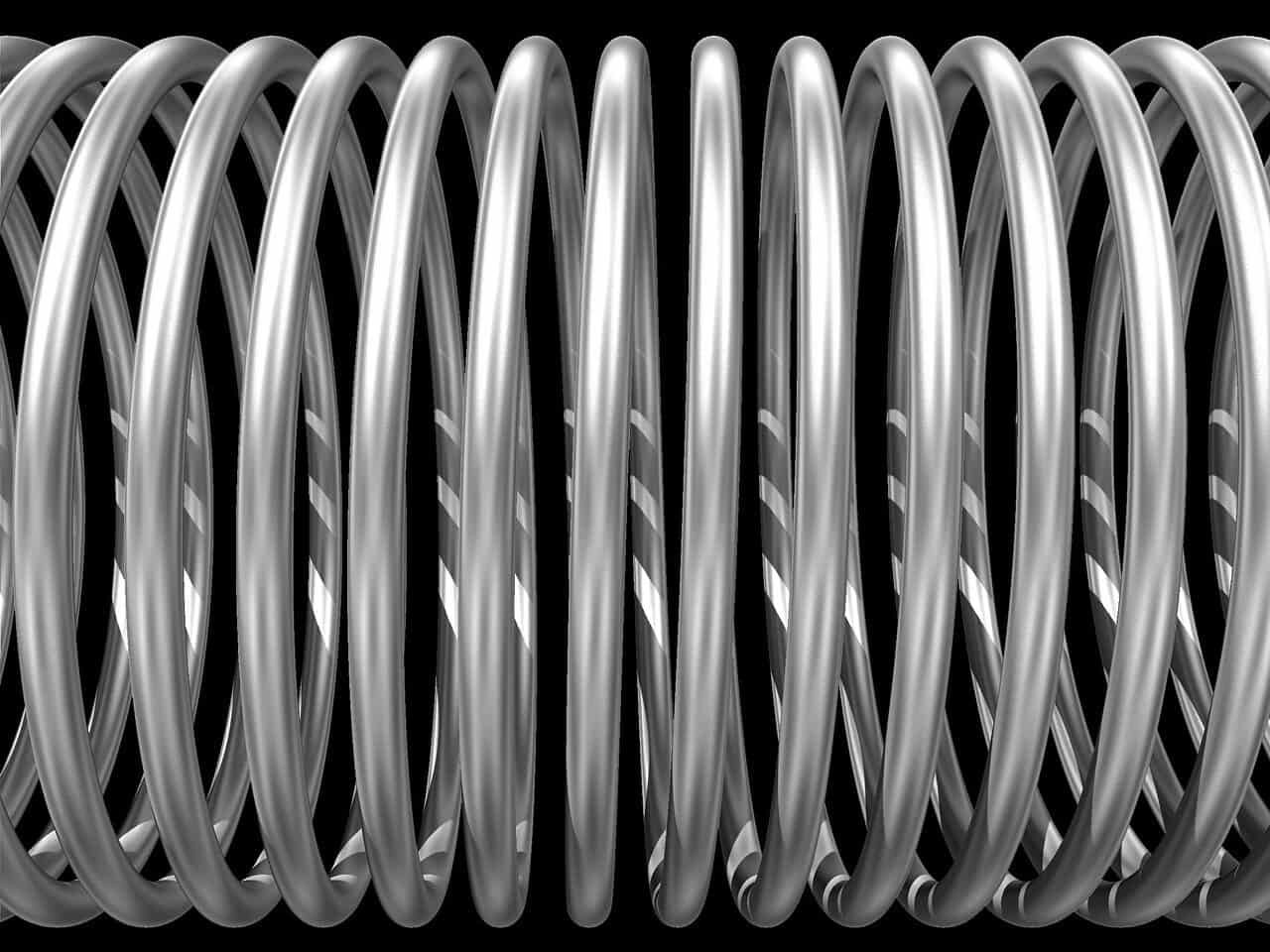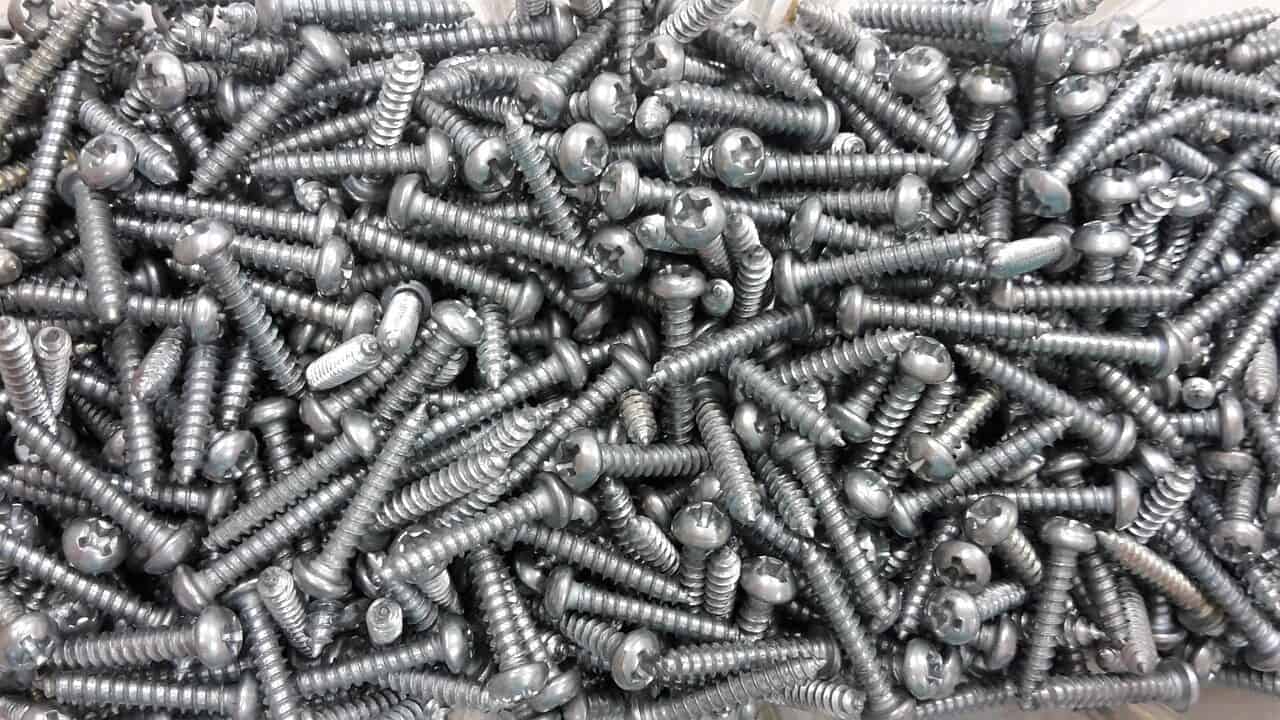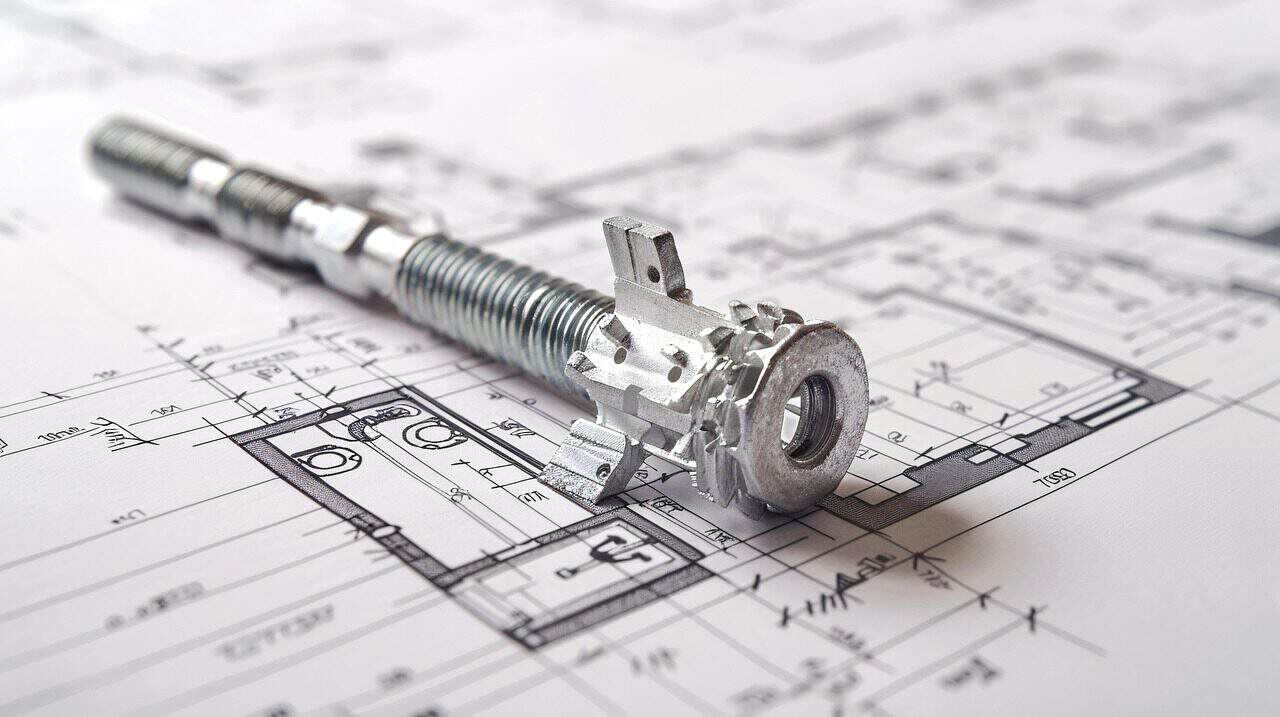The Complete Guide to Precision Screws Manufacturing: What Makes Screws Work Better
A regular screw just holds things together. A precision screw does much more. The difference isn’t just about size or price – it comes down to three key areas: choosing the right materials, controlling how they’re made, and testing them carefully. For engineers, designers, and buyers working in demanding fields like aerospace, medical devices, and high-tech electronics, understanding what makes a screw precise is essential. When a multi-million dollar satellite or a life-saving medical device fails, it can often be traced back to a part that didn’t meet its performance requirements.
This guide goes beyond basic descriptions to give you a thorough technical look at what makes a truly precision screw. We’ll break down the engineering choices and scientific principles that make sure a fastener delivers reliable performance, consistency, and dependability under heavy loads and in harsh conditions. We focus on the ‘why’ behind the ‘how’, giving you the knowledge to specify and buy components with confidence.
We will explore the following core areas of precision screw manufacturing:
- The science of choosing materials for demanding uses.
- A detailed comparison of main manufacturing methods.
- The measurement and 品質管理 systems that guarantee precision.
- Performance improvements through specialized surface treatments.
The Foundation of Performance: Materials
The performance of a precision screw starts at the smallest level – the atoms. Choosing materials is a careful decision based on analyzing multiple factors: mechanical properties, environmental resistance, how easy they are to manufacture, and cost. A material that works perfectly for a high-temperature jet engine would be completely wrong for a biocompatible bone implant. Understanding these trade-offs is essential to engineering a successful threaded connection. We analyze materials not just by their names, but by the specific properties that determine how they perform in the finished part.
Stainless Steel Types
Stainless steels are iron-based metals containing at least about 11% chromium, an element that forms a protective, self-healing chromium oxide layer on the surface. This layer is what gives the material its famous resistance to rust and corrosion. Within this family, the differences are critical for precision applications.
Austenitic grades, such as the 300 series (like 304, 316), are non-magnetic and cannot be hardened by heat treatment. Their strength increases through cold working, a key process in thread rolling. 316L, with its lower carbon content and addition of molybdenum, offers better resistance to chlorides, making it standard for marine and medical applications.
Martensitic grades, like the 400 series (such as 410, 416), have higher carbon content that allows them to be hardened and tempered through heat treatment, achieving much higher tensile strength and hardness. This makes them suitable for applications requiring high wear resistance, though their corrosion resistance is generally lower than the austenitic grades.
High-Performance Metals
When operating demands exceed what stainless steel can handle, engineers turn to an advanced class of materials.
Titanium alloys, particularly Ti-6Al-4V (Grade 5), are famous for their exceptional strength-to-weight ratio, which is better than most steels. This property is crucial in aerospace, where every gram saved translates to fuel efficiency or increased payload capacity. Additionally, titanium shows outstanding biocompatibility and corrosion resistance, making it the material of choice for medical implants like bone screws, which must function within the human body for decades. For these critical applications, materials must meet strict standards like ASTM F136, which specifies the composition and properties for surgical implant-grade titanium.
Superalloys are a category of nickel, cobalt, or iron-based materials engineered to perform under conditions of extreme temperature, high mechanical stress, and severe corrosive environments. Nickel-based alloys like Inconel 718 and A286 (an iron-nickel-chromium alloy) maintain high tensile strength at temperatures where conventional steels would fail. This makes them essential for fasteners used in the hot sections of jet engines, gas turbines, and petrochemical processing equipment. Getting these materials often requires following Aerospace Material Specifications (AMS) that require tight controls on chemistry and processing.
Material Properties Comparison
The following table provides a high-level comparison of common materials used in precision screw manufacturing, offering a quick reference for initial selection based on application demands.
| 素材グレード | Key Properties | Common Precision Applications |
| Stainless Steel 316L | Excellent corrosion resistance, biocompatible, non-magnetic. | Medical implants, marine hardware, food processing equipment. |
| Titanium (Ti-6Al-4V) | High strength-to-weight ratio, excellent biocompatibility, superior corrosion resistance. | Aerospace structural components, orthopedic screws, chemical processing. |
| A286 Superalloy | High strength at elevated temperatures, good corrosion resistance. | Jet engine components, high-temperature industrial fasteners, exhaust systems. |
| Beryllium Copper (BeCu) | High strength, non-sparking, non-magnetic, high thermal/electrical conductivity. | Electronics (connectors, springs), hazardous environment tools, oil & gas equipment. |
Core Manufacturing Processes
Once the material is selected, the method used to form the threads fundamentally defines the screw’s final mechanical properties. The two primary techniques, thread cutting and thread rolling, are not interchangeable. They represent two different manufacturing approaches – removing material versus shaping material – with major implications for strength, fatigue life, and surface quality. An engineer must specify the correct process to meet the performance requirements of the application.
Thread Cutting
Thread cutting is a material removal machining process. It uses a hardened cutting tool, such as a single-point tool on a CNC lathe or a multi-toothed die, to physically remove material from a blank, carving out the spiral groove of the thread. This method is like sculpting.
The main consequence of cutting is that it breaks through the material’s natural grain structure. The lines of grain flow, which are formed during the initial drawing of the raw material bar stock, are cut through by the tool. This creates built-in stress concentrations, particularly at the sharp corners of the thread root, which can act as starting points for fatigue cracks under repeated loading. While modern tooling can produce a good surface finish and high dimensional accuracy, the damaged grain structure remains a limiting factor for ultimate performance. Thread cutting is best suited for prototyping, producing small quantities, machining very hard or brittle materials that cannot be cold-formed, or when threading must be performed after the part has been fully heat-treated.
スレッドローリング
Thread rolling, also known as cold forming, is a shaping process. Instead of removing material, it moves it around. The process uses a set of hardened steel dies that are pressed against the screw blank with tremendous force. The dies have the negative profile of the thread, and as the blank rotates or moves between them, the material is forced to flow into the die’s grooves, forming the thread crests and roots.
The metallurgical benefit of this process is its most significant advantage. The cold working involved in thread rolling stretches and reorients the material’s grain structure. The grain flow lines are not broken; instead, they are compressed and redirected to follow the shape of the thread profile. This creates a dense, unbroken grain structure at the critical thread root, which significantly improves the screw’s mechanical properties. The compressive residual stresses created at the surface dramatically increase fatigue resistance, often by 50-75% or more compared to a cut thread. Furthermore, the cold working process work-hardens the material, increasing its tensile and yield strength. The burnishing action of the dies also produces a superior, smooth surface finish, which reduces friction and the risk of galling. Thread rolling is the preferred method for high-volume production and for any application where high fatigue life and ultimate strength are critical design requirements.

Technical Comparison: Cutting vs. Rolling
This table summarizes the critical engineering differences between the two primary thread forming methods.
| Technical Parameter | Thread Cutting | スレッドローリング |
| Material Grain Flow | Severed / Interrupted | Unbroken / Follows Thread Contour |
| Tensile Strength | Baseline | Increased by 10-30% |
| Fatigue Resistance | Lower | Significantly Higher |
| 表面仕上げ | Good (tool dependent) | Excellent (burnished) |
| Dimensional Accuracy | Good | Excellent & Consistent |
| Production Speed | Slower | Very Fast |
| Typical Application | Prototypes, hard-to-form materials, low volume. | High-performance, high-volume fasteners, high-fatigue applications. |
The Science of Verification: Measurement
A screw is only “precision” if its critical dimensions and properties can be verified to meet the specified tolerances. In precision manufacturing, quality assurance is not a final inspection step; it is an integrated system of measurement that monitors the process from raw material to finished product. This commitment to verification is what separates a basic fastener from a reliable engineering component. It involves a suite of advanced technologies operated by skilled technicians.
Dimensional Measurement
Verifying the complex geometry of a screw thread requires more than a simple set of calipers.
Optical Comparators, or profile projectors, magnify a screw’s outline by 10x to 100x or more, projecting it onto a screen. This allows for the precise measurement of features that are difficult or impossible to check with contact gauges, such as the thread root radius, flank angles, pitch, and lead. Overlay charts with tolerance bands can be used for rapid go/no-go assessment of complex profiles.
Vision Measurement Systems are the automated evolution of optical comparators. These non-contact systems use high-resolution cameras, advanced optics, and powerful software to measure dozens of features on a part in seconds. They are ideal for 100% inspection in high-volume production environments, providing highly repeatable data and generating statistical process control (SPC) reports to monitor manufacturing trends and prevent deviations before they go out of tolerance.
For the highest level of precision, Coordinate Measuring Machines (CMMs) and laser scanners are employed. A CMM uses a highly sensitive probe to touch points on the part’s surface, creating a 3D point cloud that can be compared directly against the original CAD model. This is invaluable for verifying complex geometries, positional tolerances, and first-article inspections. Laser scanners perform a similar function without contact, capturing millions of data points to create a complete digital twin of the finished part.
Property Testing
Beyond dimensions, the material’s mechanical properties must be verified to ensure they meet design specifications, especially after processes like heat treatment or cold forming.
Tensile Testing is a destructive test that pulls a sample screw or a representative test piece until it breaks. The test machine measures the force applied and the stretching, providing critical data on the material’s Ultimate Tensile Strength (UTS), yield strength (the point at which it begins to deform permanently), and ductility.
Hardness Testing, using methods like Rockwell or Vickers, measures the material’s resistance to localized plastic deformation. It is a quick and effective way to verify that a heat treatment process has achieved the desired hardness and strength, a critical factor for martensitic steels and age-hardenable alloys.
Surface Roughness Testing uses a profilometer, an instrument with a fine stylus that traces the thread surface. It quantifies the microscopic peaks and valleys, providing a numerical value for roughness (e.g., Ra). A smooth surface finish, as produced by thread rolling, is critical for reducing friction, ensuring consistent torque application, and preventing thread galling, especially in stainless steel and titanium fasteners.
The Human Element
While automated systems provide speed and repeatability, a seasoned measurement technician is invaluable for interpreting data and handling complex inspections. For example, we’ve found that for screws with complex, multi-start threads or unique profile requirements, manual setup and measurement on an optical comparator is often required to correctly identify the true pitch diameter or a subtle form error, a nuance that some automated “pass/fail” systems can miss. This combination of advanced technology and human expertise ensures true quality. All these verification processes are governed by industry standards, such as ISO 4759 which defines tolerances for fasteners, or specific aerospace (AS9100) and medical (ISO 13485) quality system requirements, which anchor the entire manufacturing system in authoritative, globally recognized benchmarks.
Enhancing Final Performance: Surface Treatments
The manufacturing process does not end when the thread is formed and inspected. A final surface treatment or coating is often applied to enhance performance in the end-use environment. These treatments are not merely cosmetic; they are functional engineering solutions that improve corrosion resistance, reduce friction, prevent galling, or prepare the surface for bonding or sealing. Selecting the correct treatment is as critical as selecting the base material.
耐食性
For materials that are not naturally corrosion-resistant like titanium or superalloys, a surface treatment is essential for longevity.
Passivation is a chemical cleaning process applied exclusively to stainless steels. It removes free iron and other contaminants left on the surface from machining or handling. This process does not plate the part but enhances the natural, passive chromium oxide layer, maximizing the material’s inherent corrosion resistance. It is a critical final step for any precision stainless steel screw.
Zinc Plating is a common and cost-effective method for protecting carbon and 合金鋼ねじ. Zinc acts as a sacrificial coating; it corrodes preferentially to the steel substrate, protecting it from rust. A chromate conversion coating is often applied over the zinc to provide an additional layer of protection and can be used to color-code parts (e.g., yellow, blue, or clear chromate).

Lubricity and Anti-Galling
In many applications, controlling the coefficient of friction is critical for achieving the correct preload from a given torque. In materials like stainless steel and titanium, which are prone to galling (cold welding) under pressure, a lubricious coating is essential.
Dry Film Lubricants, such as Molybdenum Disulfide (MoS2) or PTFE (Polytetrafluoroethylene, often known by the trade name Teflon), are applied to the threads and cured to create a solid, lubricating layer. These coatings dramatically reduce the coefficient of friction, allowing for smooth, consistent torque application and preventing thread seizure during assembly and disassembly. PTFE coatings also offer excellent chemical resistance.
Black Oxide is a chemical conversion coating that transforms the surface of the steel into magnetite (Fe3O4). It provides mild corrosion and abrasion resistance and has oil-absorptive properties that help it retain lubricants. Its primary benefit for precision screws is in preventing galling. Because it is a conversion coating with minimal dimensional change, it is well-suited for parts with tight tolerances.
Surface Treatment Overview
This table provides a technical summary of common surface treatments and their primary functions.
| Treatment / Coating | Primary Technical Purpose | Common Materials | Key Note |
| Passivation | Enhance natural corrosion resistance, surface cleaning. | Stainless Steels | A chemical cleaning process, not a plating. Removes free iron from the surface after machining. |
| Zinc Plating | Sacrificial corrosion protection. | Carbon & Alloy Steels | Thickness can be controlled. A chromate conversion coat is often added for extra protection. |
| ブラックオキサイド | Mild corrosion resistance, anti-galling. | Steels, Stainless Steels | A conversion coating with minimal dimensional change, making it ideal for tight-tolerance parts. |
| PTFE (Teflon) Coating | Extreme low friction, chemical resistance, anti-galling. | All Metals | Applied as a liquid spray and cured. Provides consistent torque-tension relationships. |
Conclusion: Bringing the Principles Together
True precision screw manufacturing is not a single action but a complete system. It is the deliberate integration of advanced material science, controlled and optimized forming techniques, and rigorous, multi-faceted measurement verification. From selecting an alloy for its specific performance at extreme temperatures to verifying a thread root radius to within a few microns, every step is a calculated engineering decision.
The journey from raw bar stock to a flight-critical aerospace fastener or a life-saving medical implant is governed by these principles. A deep understanding of how materials, manufacturing methods like thread rolling, and the science of quality verification work together is the key that unlocks a new level of design freedom and product reliability. By specifying not just the dimensions but also the material, the manufacturing process, and the necessary finishing treatments, engineers and designers can ensure they get fasteners that deliver uncompromising performance and absolute reliability when it matters most.
- ASTM International – Fastener Standards & Testing https://www.astm.org/
- ISO - 国際標準化機構 https://www.iso.org/
- Industrial Fasteners Institute (IFI) https://www.indfast.org/
- SAE International – Aerospace & Precision Standards https://www.sae.org/
- ASM International – Materials & Manufacturing https://www.asminternational.org/
- ASME - 米国機械学会 https://www.asme.org/
- NIST - 米国国立標準技術研究所 https://www.nist.gov/
- Precision Metalforming Association (PMA) https://www.pma.org/
- Society of Manufacturing Engineers (SME) https://www.sme.org/
- ANSI – American National Standards Institute https://www.ansi.org/





